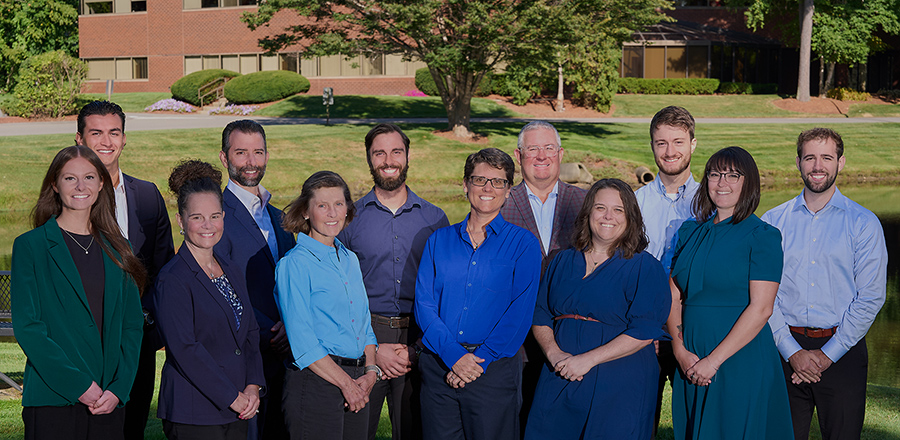
The SECURE 2.0 Act of a year ago contained a provision that will force catch-up contributions to 401(k)s or similar accounts to be made with after-tax dollars. This new rule was set to go into effect in 2024, but the IRS announced in August that it will now be delayed until 2026. In this article, we’ll discuss what catch-up contributions are, who will be impacted by this new rule, and some planning items for you to consider.
What is a catch-up contribution?
Under current law, individuals can contribute up to $22,500 of employee deferrals to their 401(k) plan. However, once you are at least 50 years old, you are eligible to make catch-up contributions.
The current catch-up contribution limit is $7,500, which can be contributed above and beyond the normal limit. This means the maximum total employee deferral for individuals aged 50 and over is $30,000 for 2023.
The updates brought on by the SECURE 2.0 Act apply only to the $7,500 catch-up contributions. These catch-up contributions could previously be made with either pre-tax or post-tax dollars. However, the new rule forces any contributions in excess of $22,500 to be made to Roth accounts for certain high earners.
Roth contributions are made on an after-tax basis, so no immediate tax benefit will be realized from these contributions. However, Roth accounts grow tax-deferred, and the money can be withdrawn tax-free if certain requirements are met.
Who is impacted by the new law?
The new rules requiring Roth catch-up contributions are intended to impact only higher-income earners. This means that only those with more than $145,000 of prior-year wages, defined as income that is eligible for Social Security withholding, will be required to direct catch-up contributions to a Roth account. This amount is indexed to inflation, meaning it will increase over time.
The $145,000 income threshold applies only to income earned from the employer sponsoring the 401(k) plan. If you switch jobs, you may still be eligible to make pre-tax catch-up contributions, depending on how much you earned with your current employer in the previous year.
For example, say you changed jobs halfway through the previous year, earning $125,000 from your previous employer and $125,000 from your new employer. This year, you will not be considered over the $145,000 threshold, since the income earned from your current employer did not go over the limit in the previous year.
This rule does not apply to SEP-IRAs or SIMPLE-IRAs.
Also, since this impacts wages only, there are planning opportunities for some self-employed individuals who have flexibility in determining the allocation of their income between wages and profits.
Why is there a delay?
The two-year delay in the new rules has been labeled an administrative transition period by the IRS. This is meant to allow plan administrators time to make appropriate updates. These may include system changes or even adding a Roth contribution option to the plan if it was not allowed previously.
The IRS also clarified that the transition period will not impact catch-up contributions in the meantime. So those who want to make pre-tax contributions above and beyond the general limits will still be able to do so in 2024 and 2025.
Planning considerations
It’s important to remember that this change is not being made because the government believes it’s in your best interest to make Roth contributions to your 401(k); the purpose of the change is to raise additional tax revenue. By requiring Roth contributions, the federal government collects taxes on your income now rather than when money is withdrawn from your account as is the case with pre-tax contributions.
So if you are eligible to make catch-up contributions now (or will be in 2026), you’ll want to think about whether prioritizing other tax-advantaged savings opportunities may make sense before you make Roth catch-up contributions to your 401(k).
For example, let’s say you are in a much higher tax bracket now than you expect to be in retirement, so you’ve decided that making pre-tax 401(k) contributions will give you the most benefit. You might want to consider other pre-tax savings opportunities, such as a health savings account or a flexible savings account. Or if you have self-employment income from a side job, a SEP IRA could be a good option.
You may also decide that simply continuing to make catch-up contributions that now will be designated as Roth contributions works well for your overall financial plan. If we can help you determine the best approach for your unique situation, reach out to our team.
Disclaimer: This is not to be considered investment, tax, or financial advice. Please review your personal situation with your tax and/or financial advisor. Milestone Financial Planning, LLC (Milestone) is a fee-only financial planning firm and registered investment advisor in Bedford, NH. Milestone works with clients on a long-term, ongoing basis. Our fees are based on the assets that we manage and may include an annual financial planning subscription fee. Clients receive financial planning, tax planning, retirement planning, and investment management services and have unlimited access to our advisors. We receive no commissions or referral fees. We put our client’s interests first. If you need assistance with your investments or financial planning, please reach out to one of our fee-only advisors. Advisory services are only offered to clients or prospective clients where Milestone and its representatives are properly licensed or exempt from licensure.



